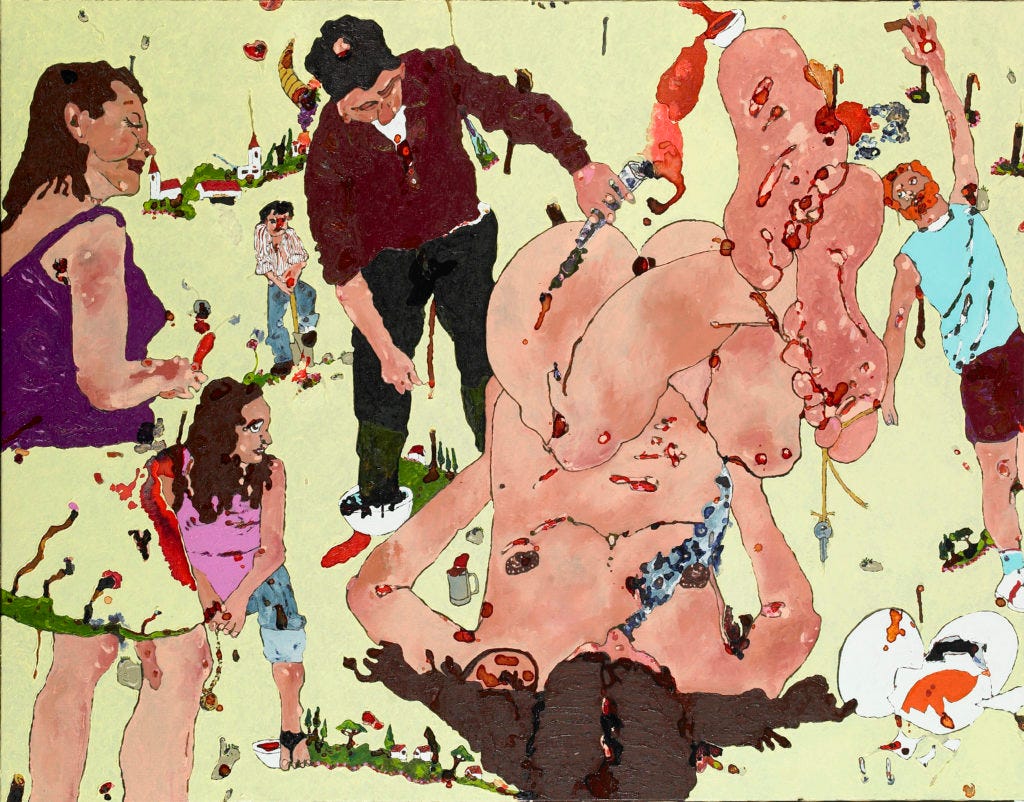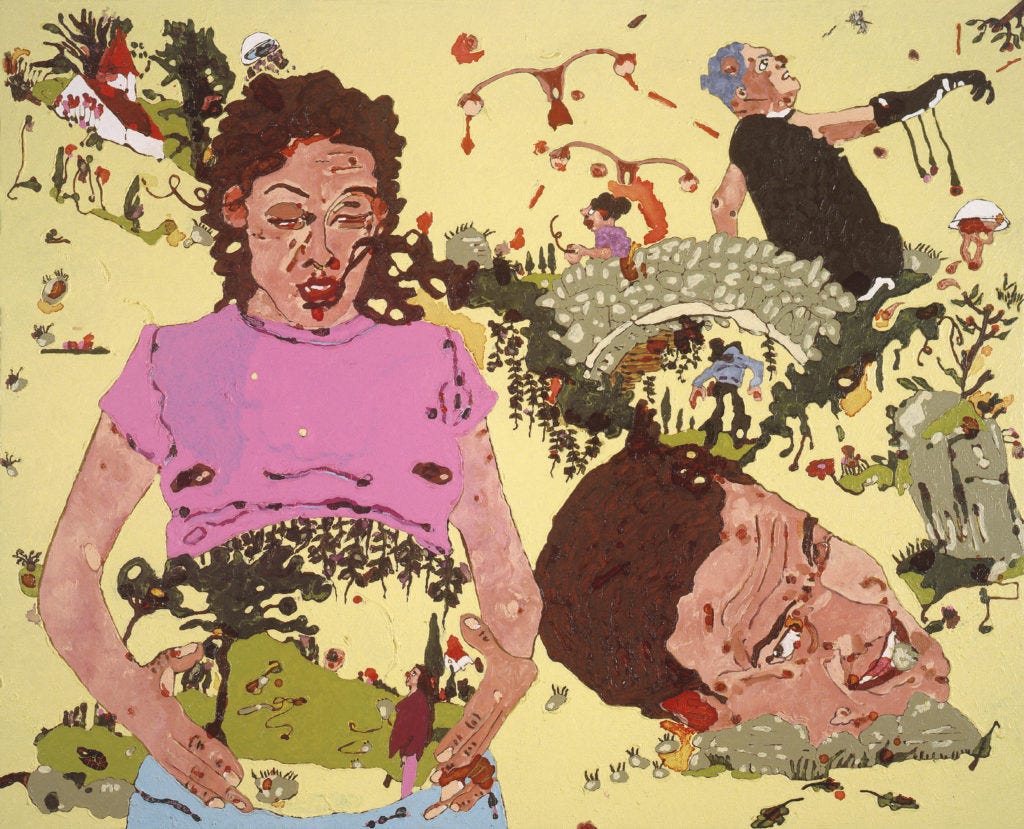Frieze London, followed by Paris Basel, are upon us. These last weeks I’ve been receiving dozens of daily emails from galleries presenting the upcoming fair offerings, and I haven’t seen any price considerations given the market we are in. I’m sure that will change in the year ahead as the paucity of sales will force further drastic changes to galleries and, frankly, to artists. But this post is not about the state of the market and is about two artists I’ve been obsessed with over the many years. Neither artist has “moved the needle” in art history nor have they influenced, to my knowledge, any successive generation of artists, but I fell in love with their work the moment I saw it.
The first is Aristides Fernandez Vasquez (Cuban 1904-1934). Most of the work he produced was done in the late years of his life. Very little is known about him; he studied at the San Alejandro Academy but never finished, he was involved in the avant-garde literary magazine, Revista de Avance -from 1927-1930. (Contributing writers included the great Spanish poet and playwright, Federico Garcia Lorca, the Argentinian conceptual writer Jorge Luis Borges, and the famous Cuban writer, Alejo Carpentier.) I first came across his work by happenstance. As I mentioned in an earlier post, I worked at Sotheby’s Latin American Art Department for two years in the early 1980s. During my last year at Sotheby’s, (before grad school) I met a Belgium Consulate (Economic) based in Atlanta, Georgia, who had done a stint in Havana, Cuba and had acquired a great deal of Cuban art, mostly Cuban modernist art. Now back in those days, a great Cuban modern artwork from someone like Renee Portocarrero, Amelia Pelaez or Cundo Bermudez would be estimated, at auction, between $5,000-7,0000, and there were only a handful of collectors-two Isaacs from the Dominican Republic who were business partners and rivals- Rudd and Leif, Wallace Campbell from Jamaica (who also had a fabulous/top rated collection of Haitian art), my dear friend Ramon Cernuda (Cernuda Fine Art in Miami), and a Cuban-American couple who were short-term players in that market and owned some optical stores in Miami. My Belgium friend wanted to sell everything he had acquired in Cuba and based upon the estimates, it wasn’t quite worth the expense of selling via Sotheby’s or Christie’s, so when I left Sotheby’s, he asked if I would help sell the collection. And I did, to one collector. But before selling, I jumped on a plane to Atlanta and taxied over to the owners’ house in an Atlanta suburb, to catalog the collection, take pictures (actually they were polaroids which the auction houses used back in the day, to prepare their auction estimates) and prepare the art for sale. Among his 55ish works of art were two gouches by Aristides. I had never heard of him much less seen his work, but I fell in love with the two works, and when it came time to get paid by my Belgium friend, I asked for the two works instead of cash. That was quite remarkable considering, 1. I needed the money; 2. the two gouaches’ value at the times was less than the commission I would have received in cash. Thankfully my airplane ticket was paid for by the buyer but, I had these two, beautiful, haunting works of art to enjoy. One of the few regrets in my life was selling those two gouaches at Sotheby’s years later. I sold because I had deepened my interest in contemporary Latin American art after leaving Sotheby’s and during my successive two years at graduate school at NYU, and I felt I should stay in the “time-period” of contemporary, especially since I had two gorgeous drawings by Ana Mendieta- one I was gifted by the family for having cataloged the Estate, and the other I purchased for $500 from the family before Ana landed in the excellent hands of Galerie Lelong, thanks to my great friend, Mary Sabbatino, but that’s another story for another post. I wish I could share the images of my two gouaches but alas, I cannot find them online or on Artnet.com’s auction database. They were as beautiful, in the same sad way, as Egon Schiele’s, Edvard Munch’s or Picasso’s blue and pink period paintings-laden with anguish and sorrow.
Philippe Perrot (French. 1967-2015) was my second obsession. The moment John Connelly from John Connelly Presents introduced me to his work in early to mid 2000s, I made it my mission to track down and acquire as much as I could. Philippe was a caricature of an artist-he was, to my understanding, an alcoholic, poor, and he smoked incessantly and he had two families, I think simultaneously, but cannot vouch for that. He very likely died from either a bad liver or lung cancer. He studied film in Paris and was a self-taught painter, and when looking at his gouaches, drawings or paintings, the fact that he studied film makes a lot of sense. His tableaux of family dysfunctionality read like vignettes from a film noir-they reminded me of David Lynch. There is nothing normal is any of his works and there is a lot of strangeness, weirdness/wildness and pathos. He produced just over 200 works of art and almost all of his art is in the hands of a few collectors and institutions. MoCA LA has one painting, MoMA has several works on paper gifted by the Judith Rothschild Foundation. Pinault has the largest holdings, around 14 works in total, and I own the second largest amount of his works, 4 paintings, two gouaches and several drawings. I’m waiting to gift them to a worthy museum who shows real interest in his oeuvre and life. The rest of his work is scattered among French private collections, French cultural institutions/museums and a few one-offs here and there. I had planned on working on his Catalogue Raisonne so the world could witness and admire the brilliance of Philippe’s work, and that in an ongoing interest that has yet to materialize. He is a French national treasure and still is un/under-recognized by his countrymen. The French are still stuck in the Relational Aesthetic group of Dominique Gonzalez-Foerster, Philippe Parreno, Pierre Huyghe, et all. He was a finalist for the Marcel Duchamp prize near the end of his life but not surprisingly, did not win. At least some of his works were exhibited at the Pompidou, along with the other Duchamp finalists. He has an important French curator/museum director very interested in his work, but there still seems little appetite in Paris for his narrative paintings. He does have the support of a famous, Italian artist and if this Catalogue Raisonne project ever gets launched, I will ask him to write an entry. I am grateful for the time I spent with him in Paris (at the suggestion of Oliver Antoine, owner of Art:Concept in Paris and Philippe’s loyal dealer.) The studio visit was unforgettable. It was during a rare, productive moment in his life and Oliver took us, Rosa (de la Cruz), Silvia (Karmen-Cubinas, now Dir. of Bass Museum in Miami Beach) and I to visit. His studio was essentially a stall similar to the size of the stalls that line the Seine. He was working on three canvases, two of which Rosa acquired, and which eventually made their way into my collection because, five years later, Rosa decided she didn’t want his work anymore. The larger painting was acquired by an American who eventually donated his 3 Perrots to the Musee d’Art Moderne in Paris.
La soeur inversée, 2007. Oil and antiseptic on canvas
L’homme invisible, 2007. Oil and antiseptic on canvas, 31 1/2 x 39 3/8 in
Take a close look at these images if you can. There is a lot going on. His usage of Betadine as a “color” is fascinating. There is so much information, action and psychology packed into these paintings and works on paper it could easily launch a PhD dissertation. I wish I could see both Aristides and Philippe’s work in an American museum but, in the case of Aristides, there is simply not enough work to exhibit. I think there are only 4 or 5 works outside of Cuba in private hands. As for Philippe, I’ve already recounted what I know. An exhibition of both together, two men separated by generations, cultures, and continents with the same sensibilities would be fascinating to experience.






Beautiful post and great artists!!